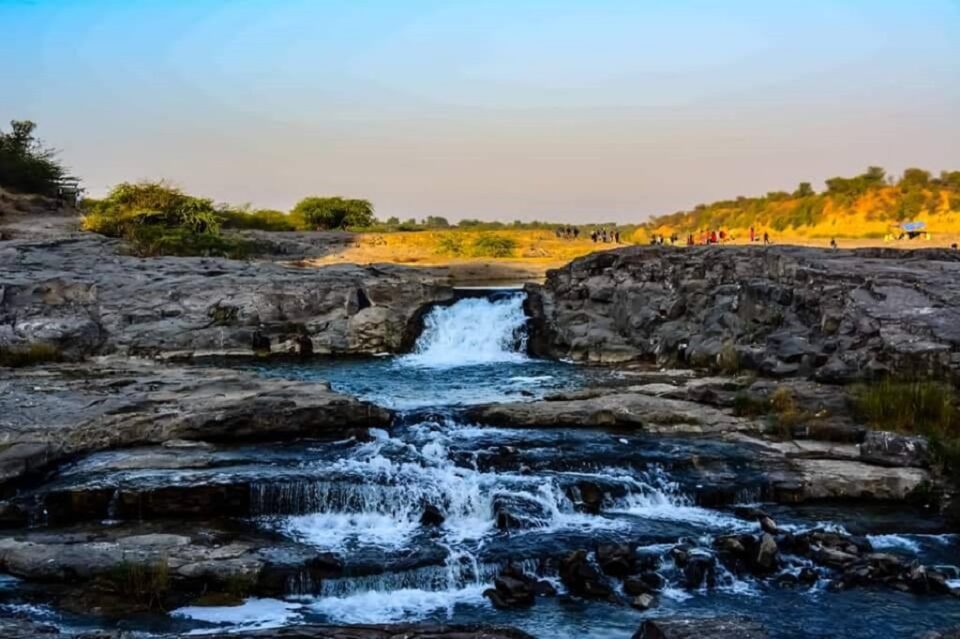Kumbhalgarh
Maharana Pratap, the then-warrior king of Mewar, was born in Kumbhalgarh, a hidden treasure in Rajasthan, in the 1500s. Additionally, the majestic Kumbhalgarh Fort, a UNESCO World Heritage Site, may be found nearby. The fort, which Rana Kumbha built in the 15th century, is shielded by the Aravali mountain range’s surrounding peaks. There are 360 Hindu and Jain temples, palaces, and halls inside the fort, which has seven portals and a 36-kilometer-long wall enclosing it. From the top of Kumbhalgarh Fort’s walls, you can view the Thar Desert’s dunes in the distance.
Gir Forest National Park and Wildlife Sanctuary
Over 1400 square kilometers of the Gir Forest National Park and Wildlife Sanctuary, also known as Sasan Gir, are devoted to the Asiatic lion. The landscape is a combination of grasslands and dry deciduous woods with teak and fruit-bearing trees like ber and Jamun. It is thought to be one of Asia’s most protected areas. While the lion is unquestionably the park’s most popular attraction, other animals that call Gir Forest National Park and Wildlife Sanctuary home include leopards, hyenas, antelopes, jackals, and wild boars.
Udaipur
Udaipur, one of India’s most romantic cities, is also known as the City of Lakes and is frequently referred to as the “Venice of the East.” The ancient princely state of Mewar’s capital, Udaipur, is a popular destination for tourists who come to visit the city’s numerous magnificent monuments, temples, palaces, and lakes. The famous Jag Mandir and Jag Niwas are situated on Lake Pichola, which has four islands. Explore the cityscape and its sites, such as the City Palace, Jagdish Temple, Sahelion ki Bari, and Lake Fatehsagar, while you are in Udaipur.
Mount Abu
At 4,003 feet above sea level, Mount Abu is a welcome mountain hideaway in the arid state of Rajasthan. The lovely Nakki Lake, which is encircled by lush mountains, is the center of activities. Mount Abu is home to the renowned Jain Dilwara Temples with their beautifully carved facades and the historic Gaumukh Temple, in addition to the evergreen forests and cold mountain air. The Lord Shiva-focused Achaleshwar Mahadev Temple, located next to the Achalgarh Fort from the fourteenth century, is another notable temple.
Rann of Kutch, Little Rann
India’s solitary wildlife reserve for the imperilled Indian wild ass is located in the arid wilderness of the Little Rann of Kutch.
Along with an enormous population of Indian wild ass, the 5,000-kilometer-long Wild Ass Sanctuary is home to blackbucks, jackals, Indian gazelles, and African lynxes. The Little Rann of the Kutch region becomes a productive wetland during the monsoons, where bird species proliferate. They include spoonbills, pelicans, Indian flamingos, and saras cranes.
Forests of Polo and Vijaynagar
The 400 square kilometer-long Polo and Vijaynagar Forests are both beautiful and interesting. The Harnav River, which once flowed through a thick forest where various architectural wonders are safely hidden, now flows through what was once the site of an ancient city. In the Polo and Vijaynagar Forests, there exist remains of 15th-century Jain and Shiva temples as well as the ‘pol,’ or gate, signifying its position as a gateway between Gujarat and Rajasthan.
Modhera
The renowned Sun Temple can be seen in Modhera. The main temple previously housed an elaborate gold chariot that was constructed in 1026 AD during the Solanki kingdom. At Surya Kund, the two towering decorative arches that serve as the gateway to the Sabha Mandap and the four terraces that drop into this step well are remnants of the once-grand complex. Erotic imagery on the walls of the Sun Temple in Modhera represents celibacy rather than sex.
Nal Sarovar Bird Reserve
At the 120-square-kilometer Nal Sarovar Bird Sanctuary, which includes a lake and marshlands, birdwatchers are in for a wonderful treat. The lake attracts more than 210 kinds of native and migratory birds, making it Gujarat’s largest wetland bird sanctuary. Some of the birds that come to the refuge to nest there include flamingos, herons, rosy pelicans, and white storks. The best method to visit Nal Sarovar Bird Sanctuary is via a boat cruise, which is available from 6 am to 6 pm.
Gujarat’s Gandhinagar
Gujarat’s capital city, Gandhinagar, is situated on the western bank of the Sabarmati River, some 23 kilometers from Ahmedabad. Akshardham Temple, one of India’s most stunning temples, is located within Gandhinagar, one of the country’s few planned cities. Adalaj Stepwell and the captivating Children’s Park are two more points of interest for visitors. Taking a cab is the most effective way to get from Ahmedabad to Gandhinagar.
Kalpeshwar
One of Uttarakhand’s well-known Panch Kedars, Kalpeshwar is well-known for its temple, which is venerated for hosting Lord Shiva in one of his five incarnations (Kedars). Kalpeshwar, which is perched at a height of 2400 meters, is a spectacular location with breathtaking views of the Himalayan ranges. From any location in Ahmedabad, a hired cab or a private automobile can be used to reach Kalpeshwar with ease.




